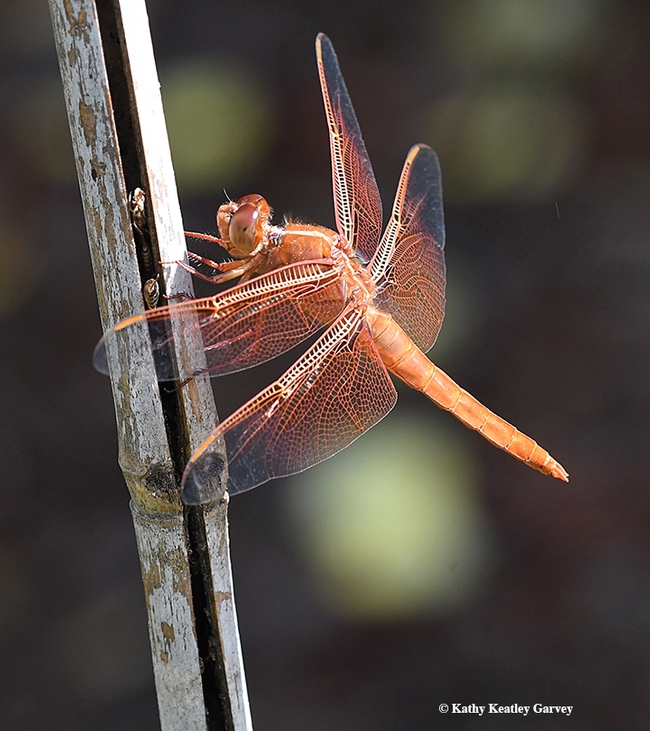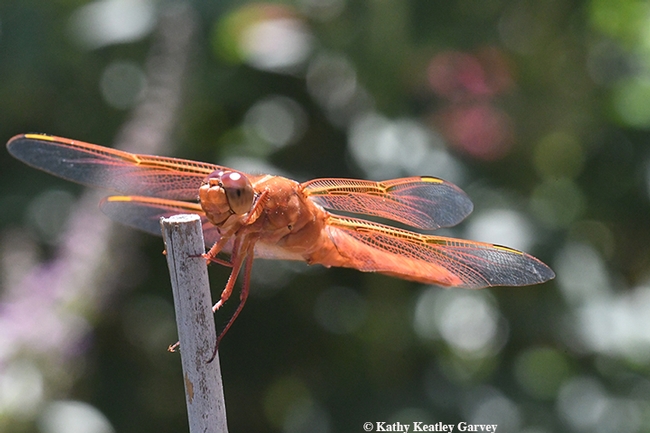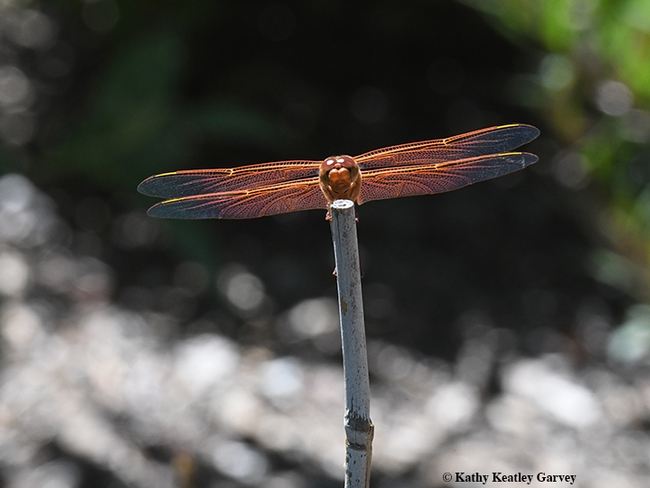Big Red visited us for four consecutive days.
The red flameskimmer dragonfly, Libellula saturata, zigged and zagged into our pollinator garden in Vacaville, Calif. and perched on a bamboo stake for five hours at a time.
Occasionally, he'd hunt--lift off and grab a bee or other insect--and return to the stake to eat it.
Meanwhile California scrub jays nesting in our cherry laurel hedge eyed him. Hmm, there's lunch! And there's lunch having lunch!
Big Red knew they were there but paid no attention to them. He was more interested in the pollinators in the catmint.
He didn't seem to mind us. We eased toward him, about five inches from him. He seemed to know we weren't predators, but photographers.
According to Nature's Notebook (Connecting People with Nature to Benefit Our Changing Planet):
"This species occurs in most states in the western half of the United States from Montana to Oregon, south to southern California, east to Texas, and north through Oklahoma, Kansas, and Wyoming. There are outlying records in Missouri and South Dakota and a disjunct population in Houston, Texas. The species also occurs in northern Mexico (Baja California, Chihuahua, Coahuila, Nuevo Leon, Oaxaca, and Sonora)."
"This species is typically found near warm water ponds, warm, slow streams, lakes, ditches, and hot springs- particularly in the northern part of its range. In Idaho, it occurs in high elevation deserts."
We provided the fish pond and the pollinator garden. And the bamboo stakes...
Attached Images:

A red flameskimmer, Libellula saturata, perches on a bamboo stake. Note the nesting earwigs and bees in the split stake. (Photo by Kathy Keatley Garvey)

A red flameskimmer, Libellula saturata, sparkles in the sun. (Photo by Kathy Keatley Garvey)

Helicopter? No, a red flameskimmer, Libellula saturata, glimmering in the sunlight. (Photo by Kathy Keatley Garvey)

A flameskimmer,Libellula saturata, in flight. (Photo by Kathy Keatley Garvey)